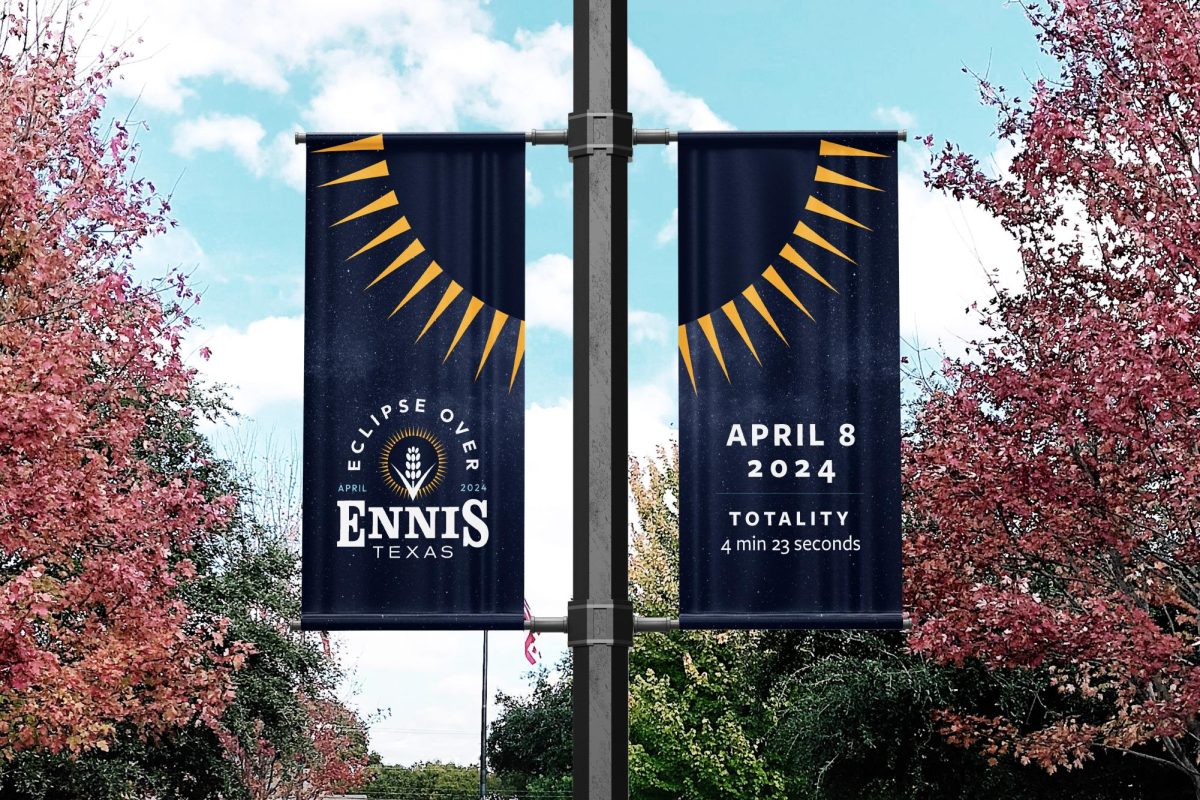Arlington Heights High School Senior Patrick Jones is used to getting attention from his football coaches and classmates. He sometimes even gets 10 phone calls a week from college football coaches.
The former defensive end and nose-guard for the Arlington Heights Yellow Jackets, and a verbal commit to play at Southern Methodist University (SMU), this fall, will ink his plans to become a defensive-tackle for the Mustangs Wednesday.
Jones will join thousands of other high school athletes nationwide in signing letters of intent as part of National Signing Day.
For Jones, it’s the end of a long road of recruitment, an opportunity which he can largely thank both a teammate and the digital age for.
That’s because SMU didn’t come to Arlington Heights in pursuit of Jones. They went after quarterback Deion Hair-Griffin, who plans to play at the University of North Texas starting this fall.
And Jones was in the right place at the right time.
“They recruited Deion, and in the process of watching his film, they discovered me,” Jones said. “Suddenly, coaches were watching my film and contacting me. By spring 2015 I had committed to SMU.”
It is not unheard of for players to be unintentionally discovered by college scouts pursuing a teammate, but a new era of technology has rapidly accelerated that phenomenon.
College football recruiting has grown exponentially since the explosion of the internet and digital media. It has been dominated by the emergence of college athletic recruiting sites including Rivals.com, Scout.com and Hudl.com, packed with highlight reels of players across the country.
Gone are the days of colleges having to send scouts to watch players or requesting player footage to be mailed to them. With technology today, scouts are a mere click of a button away from accessing video of nearly any player in the country with talent to succeed at the next level. All it takes is for a scout to stumble across footage of a player, and that player might get their big break.
D Magazine Managing Editor Travis Stewart, a former managing editor at Dave Campbell’s Texas Football, said the abundance of video created by the digital age has done wonders for player opportunity in recruiting.
“The biggest pro is now you have all these videos of kids who previously wouldn’t get much attention, and players can squeeze into the conversation a little later now,” Stewart said.
As a player who gained sudden attention from recruiters, Jones said the process can be a whirlwind for players with situations like his.
“There really is no way to prepare for it,” Jones said. “It can get stressful having to talk to so many coaches on the phone each week, especially since I’m not a ‘talk on the phone’ kind of guy, but it’s a privilege.”
Along with SMU, Jones was recruited by schools including TCU, LSU, Texas Tech and Purdue.

Though Jones has experienced the positives of player footage being more accessible than ever before, the current state of recruiting doesn’t always create positive trends.
Jamie Newberg, who has covered college football recruiting for sites including Scout.com and GridironNow.com, says the recruiting process becomes increasingly convoluted as its scope widens.
“It has gotten out of hand in so many capacities,” Newberg said. “As coverage grows, more fans get involved, the process starts earlier, players will commit and de-commit and people get big heads.”
Newberg isn’t the only expert to voice concern over what football recruiting has become.
Stewart fears that technological innovations in the recruiting world may have a cost when it comes to accurately evaluating players.
“Recruiting is harder to do correctly today, because it’s easier to rush since player information is more readily available,” Stewart said. “Recruiters used to have to put in a lot of work, and they got accurate results. Now all you have to do is type in ‘Scout’ on Google.”
As for early recruitment, Stewart said it is a result of players marketing themselves online as early as their freshman year. At sites such as Hudl.com, players can create profiles and upload highlight footage of themselves to attract scouts.
Stewart said it is a gamble for schools to recruit early since the younger players haven’t proven consistency yet on the field.
“Lining too many kids up too early can hurt programs,” Stewart said. “Early lock-ups often won’t shape up as expected.”
Stewart said recruiting busts can also be attributed to overhyping recruit star ratings assigned by sites such as Rivals. He added that programs often put too much trust in the ratings while not studying the complete profiles of players.
“If you look at Texas A&M, they’ve racked up high rated recruiting classes since 2012 when they entered the SEC and Johnny Manziel emerged, but the teams haven’t been great,” Stewart said.
After going 11-2 in 2012, Texas A&M went 9-4 in 2013 before going 8-5 in 2014 and 2015. The Aggies hit a low point in December 2015 when quarterbacks Kyle Allen and Kyler Murray, who came to the program as five and four-star recruits per Rivals respectively, transferred out of College Station.
Billy Wessels, the publisher of the Rivals’ TCU site PurpleMenace.com, believes the ratings are often exaggerated when powerhouse programs recruit players.
“If a kid is recruited by a household program like the University of Texas, they will probably get an extra star from the Rivals board of directors who rate them,” Wessels said. “It’s all about the money. We probably have about 300 subscribers for Purple Menace, and UT has hundreds of thousands for its page.”
The frenzy over ratings can be an advantage though for schools who prefer taking the risk of recruiting players they believe the market undervalues.
“Usually if you are being recruited by a Power-5 school, you are at least a three-star recruit, but some schools including TCU have had success with lower rated players,” Wessels said.
A recent case for Horned Frogs happened in fall 2015, with the breakout of wide-receiver Kavontae Turpin. The true-freshman form Monroe, Louisiana was recruited as only a Rivals two-star player, yet was second among all TCU receivers in 2015 with 649 receiving yards and eight touchdowns.
“Turpin literally went from a no-name to an overnight sensation with the Frogs,” Wessels said. “Coach Patterson is great at finding players like that.”
Time will tell if Jones, a two-star recruit by Rivals.com, will fall into that category of players such as Turpin who perform above expectations at the collegiate level. For now, the stress of his recruitment will come to an end with the signing day ceremonies Wednesday.
It will also be the last chance for the media to capture any drama surrounding the 2016 recruiting class, as order will trump chaos once players ink their offers. While some are critical of the media over-glorifying recruits and potentially giving them large egos, Jones doesn’t take issue with the limelight.
“I love what the media does for recruits with all the edits and coverage,” Jones said. “We work hard as players to be wanted, and to have that little moment about you is really special for a lot of guys.”
Jones has thrived off the positives of a new-era of recruitment, and his future at SMU could very well be the opportunity of a lifetime.

College campuses have become the most likely to see substance abuse.
Published Apr 17, 2024
Published Apr 16, 2024
Published Apr 16, 2024
Published Apr 16, 2024
National Signing Day marks culmination of football recruitment frenzy
By Dean Straka
Published Feb 3, 2016
QUICK LINKS
ABOUT TCU
FOLLOW US
TCU 360 is the official, student-produced product of the Department of Journalism in the Bob Schieffer College of Communication at Texas Christian University.
Our mission is to develop aspiring journalists who use accurate and ethical reporting to inform and serve people invested in TCU.
All Horned Frogs are welcome.
Copyright ©2024 TCU Student Media. All rights reserved.
Our mission is to develop aspiring journalists who use accurate and ethical reporting to inform and serve people invested in TCU.
All Horned Frogs are welcome.
Copyright ©2024 TCU Student Media. All rights reserved.




